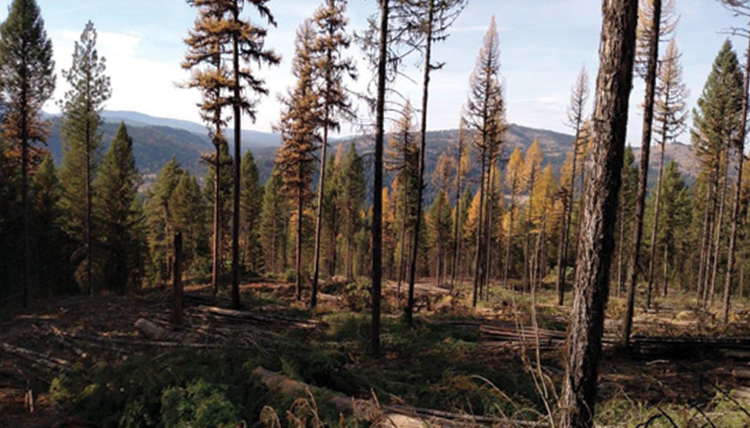A new story in the Seattle Times explores the value of thinning Washington forests to make them less susceptible to wildfires.
In 2017, Washington’s Department of Natural Resources rolled out a 20-year plan to improve the health of state forests. Information was gathered from agencies and organizations with backgrounds in forest conservation, the timber industry, science, as well as local, state, federal and tribal leadership.
Of the 10 million acres of forested land in Eastern Washington, nearly 2.7 million acres needs restoration to make it more resilient to insects, disease and wildfires, the plan says. This involves implementing science-driven methods for preventing and reducing catastrophic wildfires.
Restoration projects require time, but already are showing results. Vaagen Brothers Lumber has been working with federal, state and local leaders to improve forest health at Colville National Forest through improved forest management techniques including thinning trees and doing stream restoration, replacing culverts for improved fish passage and better water quality. Their “A to Z” forest restoration project includes 54,000 acres, with work over a decade. Colville National Forest was on the top three forest producers in 2017.
Thinning projects in Umatilla National Forest, which covers 1.4 million acres in southeastern Washington and northeastern Oregon, are showing results, too. More space between trees means less fuel for wildfires, and less of a chance of the fire becoming catastrophic.
Healthier forests are more productive, offer habitat for wildlife and help keep the state green and beautiful. Healthier forests are also more resilient and resistant to insects, disease and catastrophic fires. Washington is the second-largest producer of lumber in the country, and protecting this natural resource has economic as well as ecological benefits.
According to another story in the Seattle Times this week, the Department of Natural Resources’ 20-year plan to restore forest health is being underfunded by state lawmakers.
Since 2015, the legislature has given the Department of Natural Resources (DNR) and the Department of Fish and Wildlife (WDFW) — the main state agencies tasked with preventing and combating wildfires — just $18 million out of the $40 million they requested for their operating budget, according to a tally obtained by The Seattle Times from state’s Office of Financial Management. The allocations even fell short of Gov. Jay Inslee’s request for $27 million.
Out of the $25 million DNR and WDFW asked for in their supplemental budget from 2017 to 2019 to start implementing a 20-year plan to thin the state’s forests, lawmakers granted $18 million.
Funding of the agencies “doesn’t really scratch the surface,” Peter Goldmark, Washington’s former commissioner of public lands, who’s been lobbying for years for stronger action against wildfires that he expects to worsen otherwise. “It’s only going to get worse.”
DNR’s forest plan still has tremendous value, and the agency says it will request more funding from the Legislature next year.
Carlo Davis, a spokesman for DNR, said his agency will be seeking additional firefighting resources and increased funding to thin overcrowded forests. About 2.7 million acres of Washington forestland are unhealthy due to the overcrowding that causes trees to be weak and lose their natural wildfire resistance, he said in an emailed response to questions.
The 20-year plan — the one that’s being underfunded — calls for the restoration of forest health of 1.25 million acres, according to Davis. It targets drier forests in eastern Washington, where decades of fire suppression efforts allowed a build-up of densely-packed trees primed to burn more intensely than in centuries past. The treatment often involves chain-saw thinning and then controlled burns during cooler weather.
